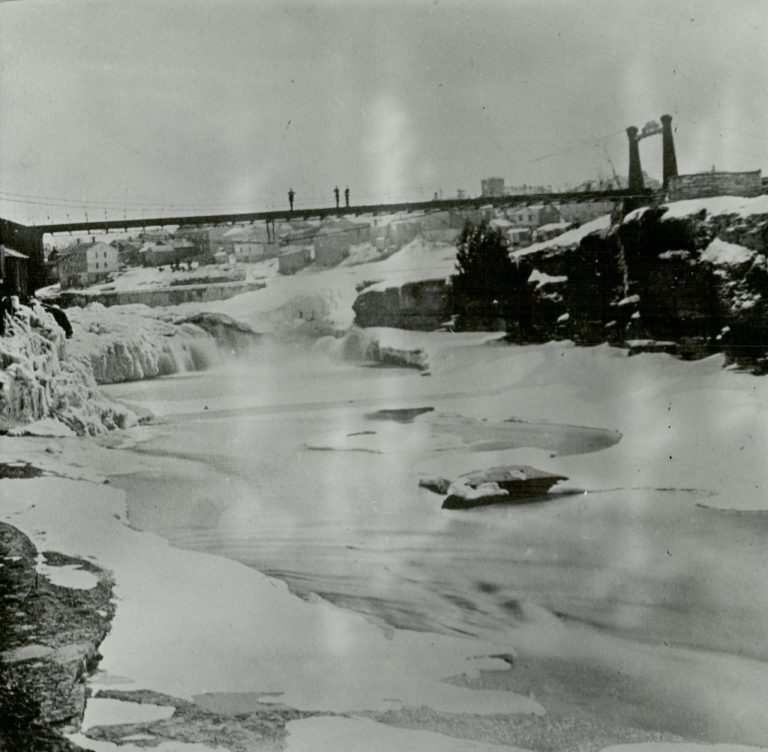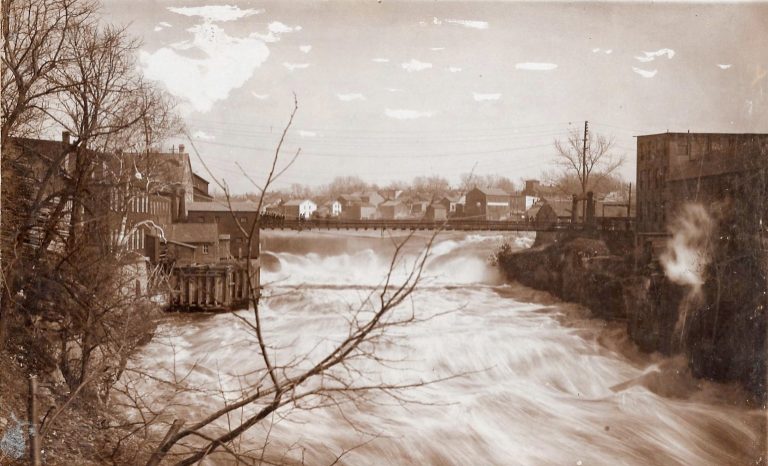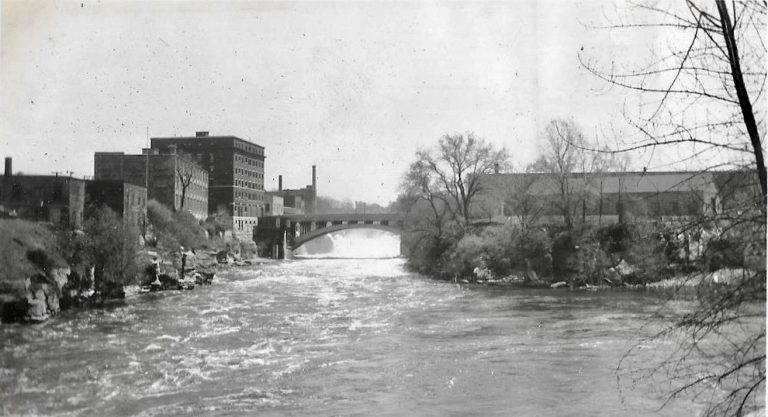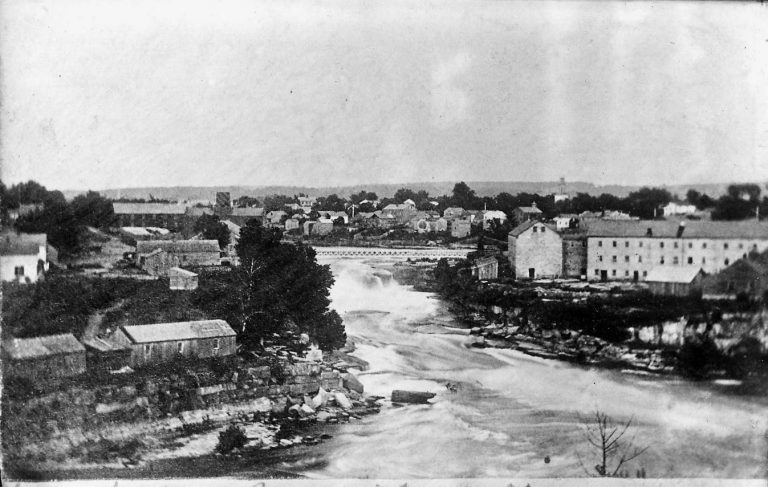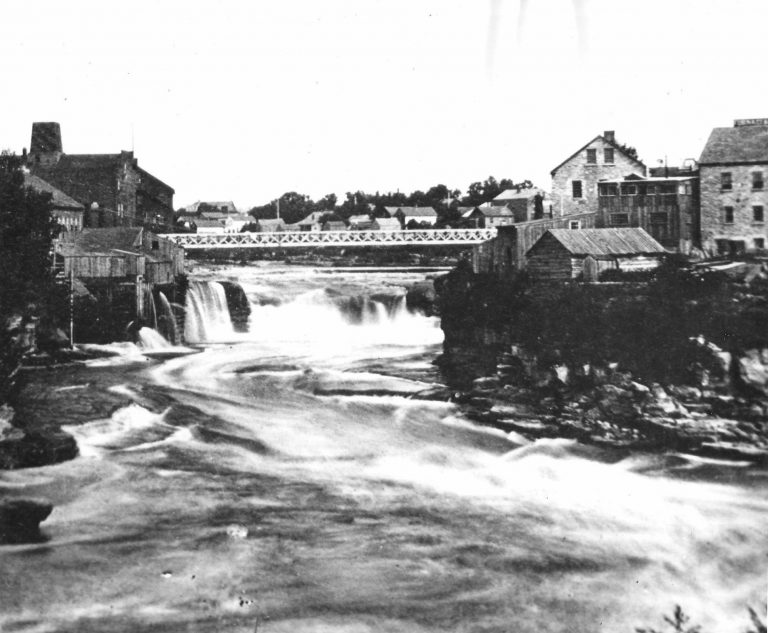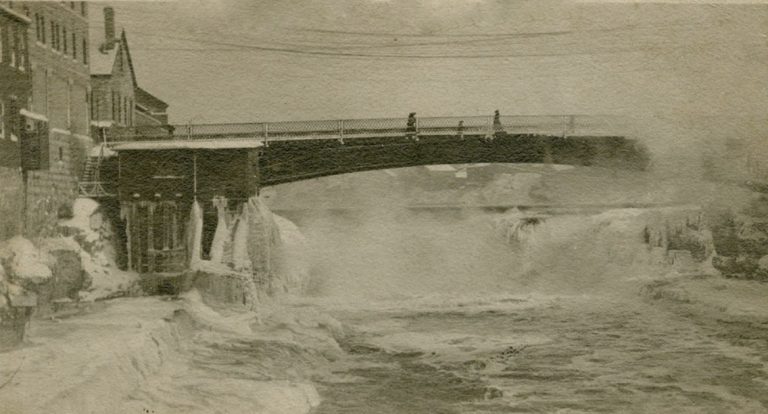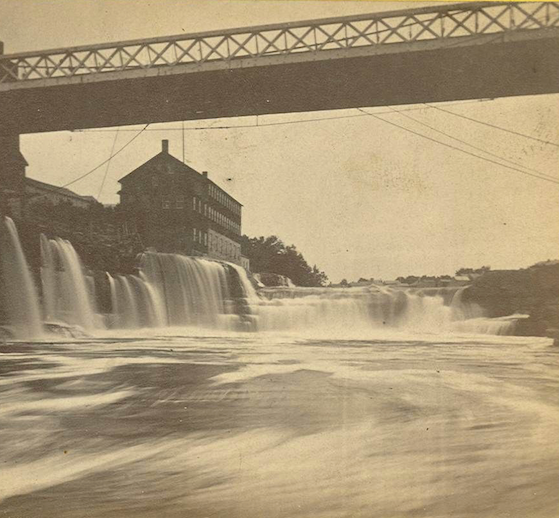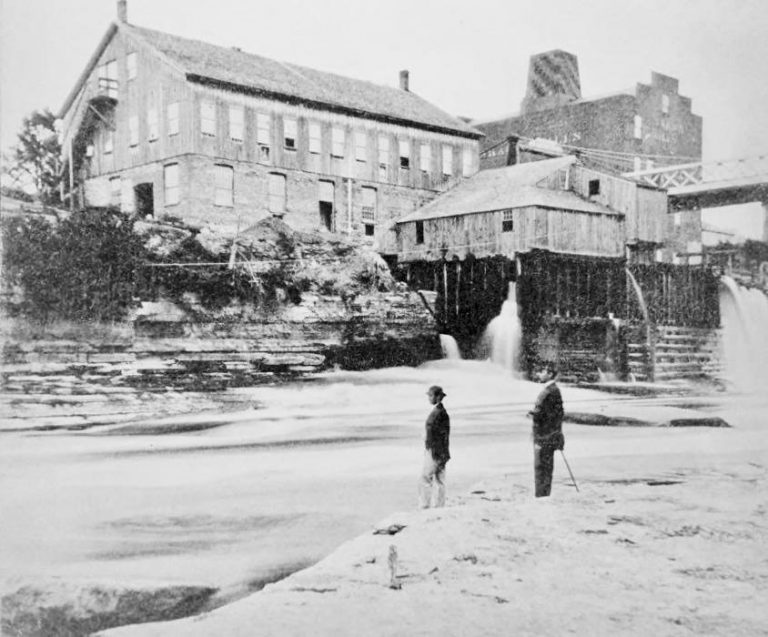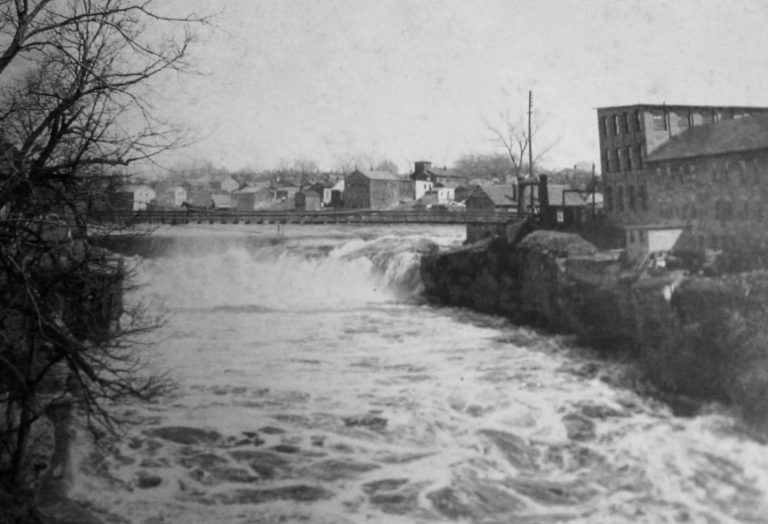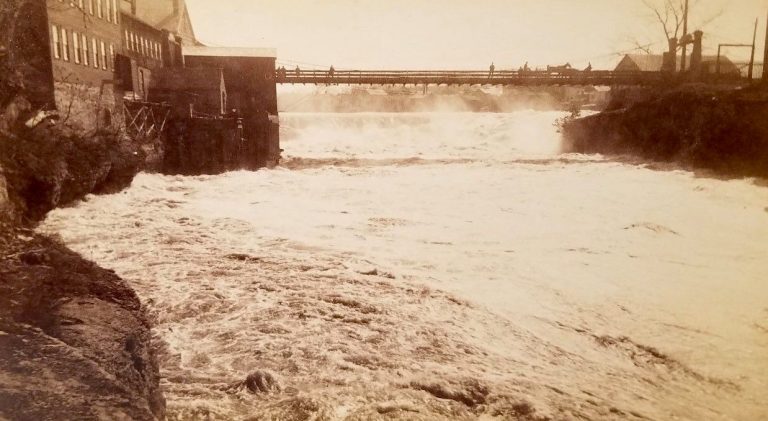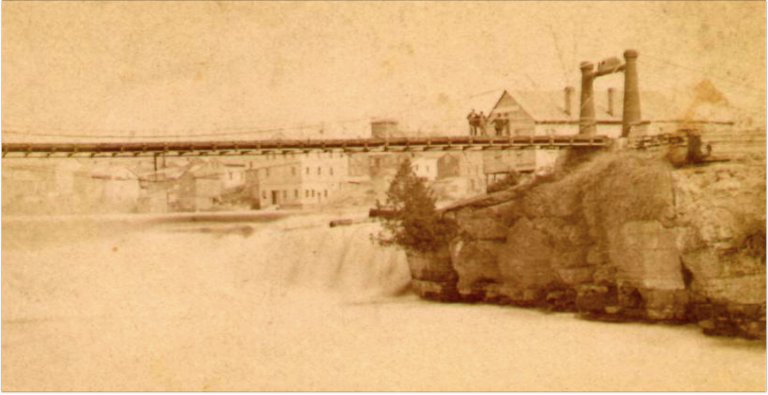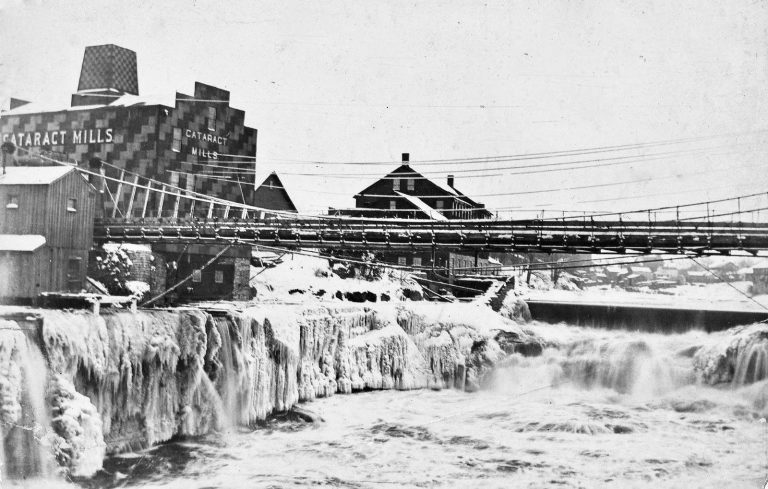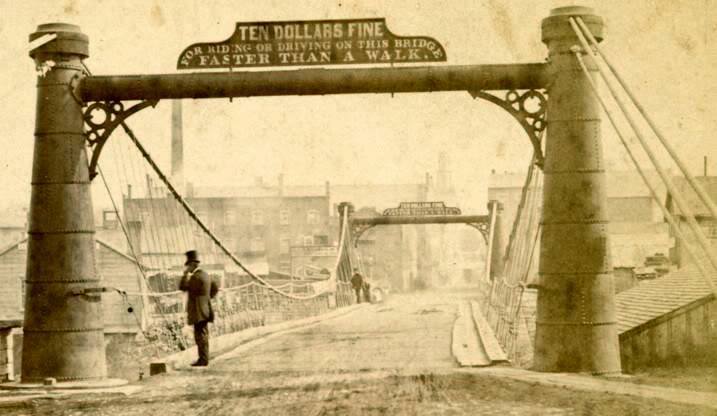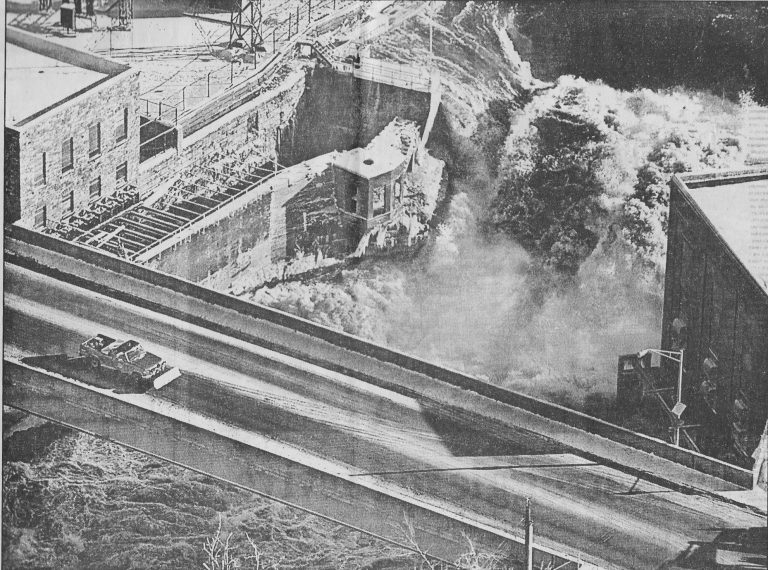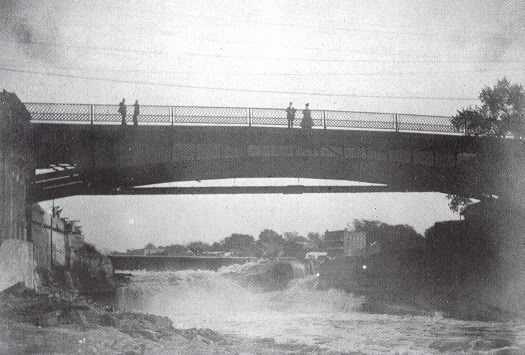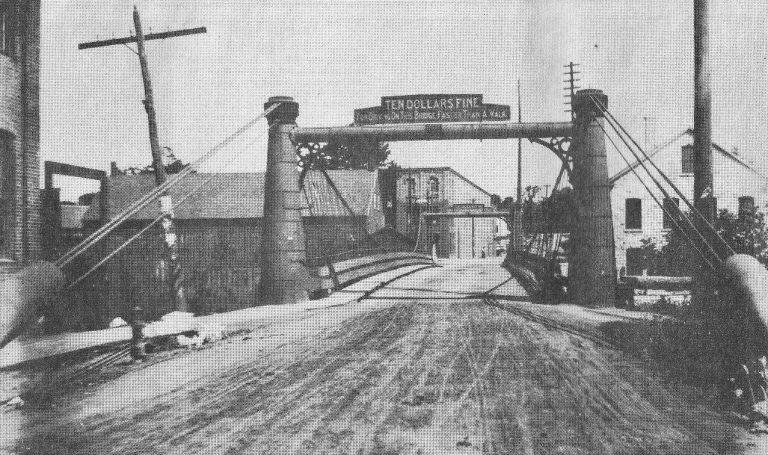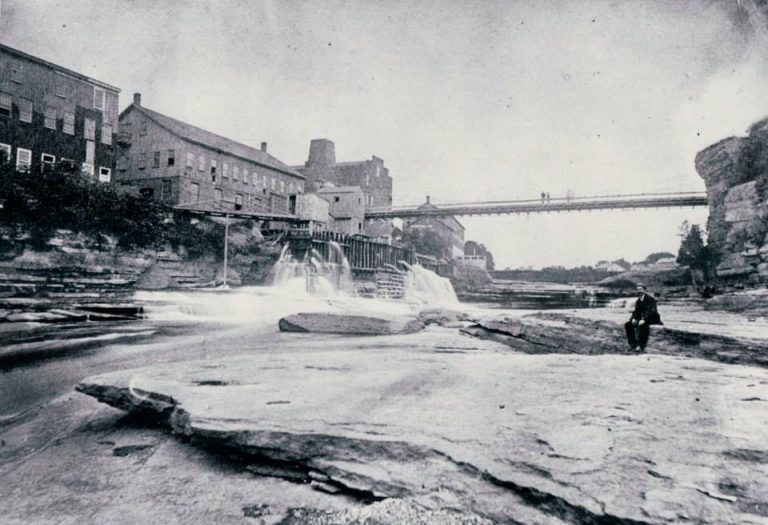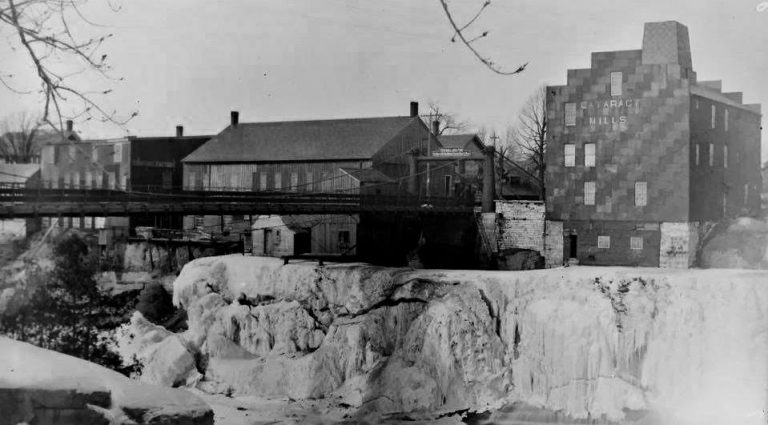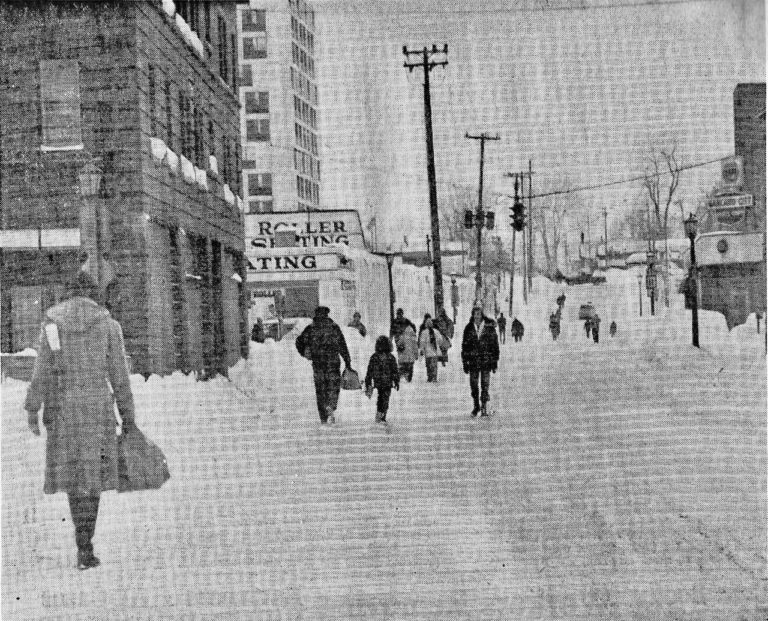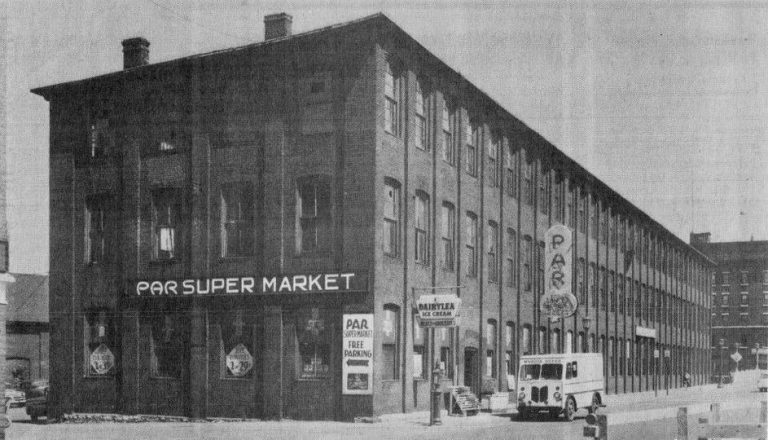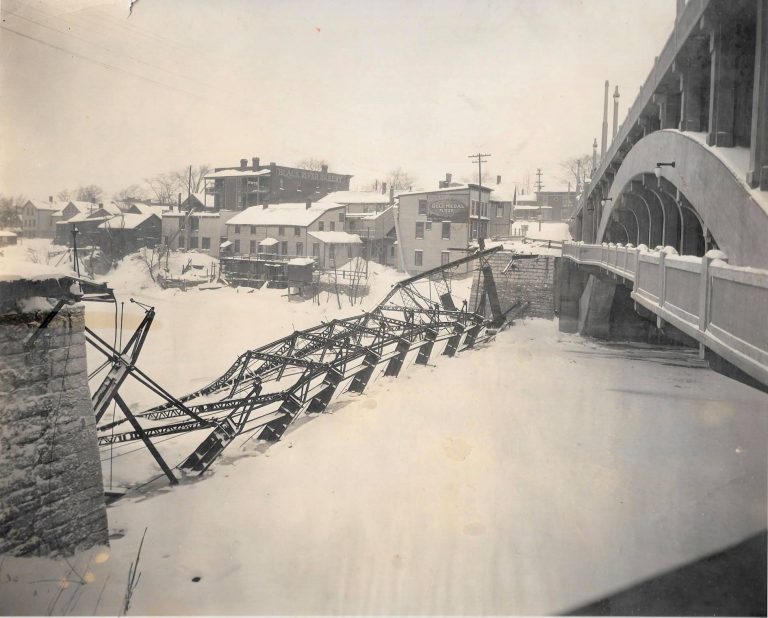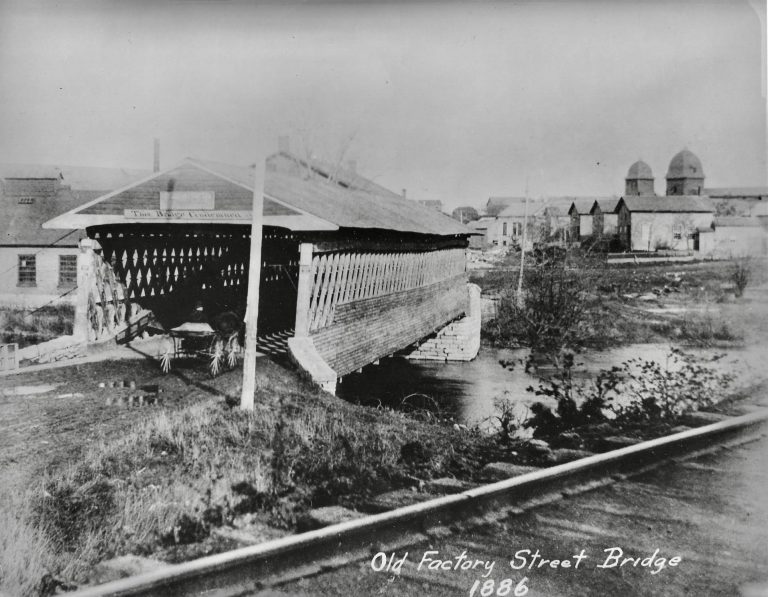The Mill Street Bridges of Watertown, N.Y
Note: Mill Street has two bridges, a larger span from Beebee Island to the city’s Northside and a smaller span from just past Newell Street to Beebee Island. This article, The Mill Street Bridges of Watertown, N.Y., focuses on the larger, main span over the Black River.
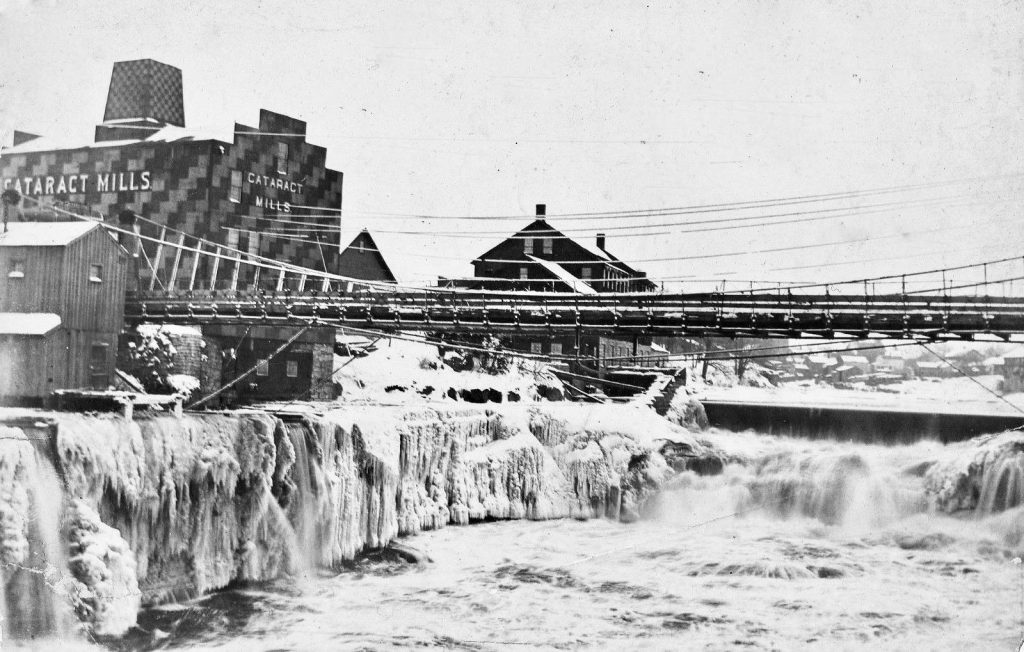
Like the Court Street Bridge, the first Mill Street Bridge, built in Watertown in 1803, was made of wood. It’s uncertain how long the initial bridge lasted, considering some of the advancements made in engineering nearly 100 years later, which lasted only 30 years due to changes in travel and transportation. However, the next known bridge was put in place around 1836.
This suspension bridge became the city’s oldest by the time it was replaced in the late 1890s after a new bridge was ordered in 1896. During its lifespan, it underwent some minor changes, mostly in the form of what may have been a type of guardrail on its sides, shown in some photos with an “x” pattern on the wooden frame. The bridge was notable for having a sign declaring, “Ten Dollars Fine for riding or driving on this bridge faster than a walk.”
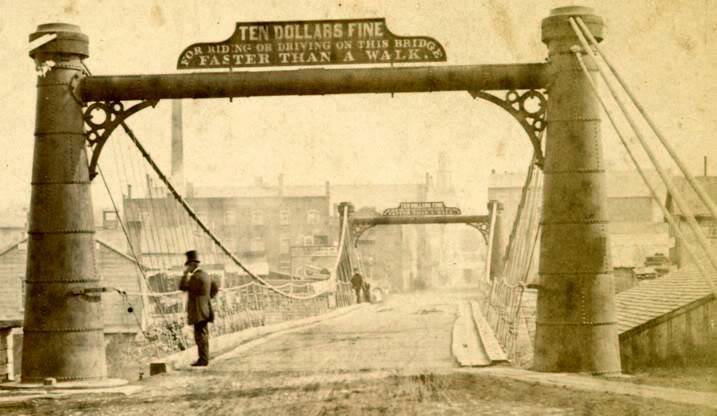
The suspension bridge’s replacement would be an iron bridge that, by the mid-1920s, had already outlived its usefulness due to the invention of the automobile. The bridge would be declared a hazard and closed to all, except for fire apparatuses, weighing several tons and costing $12,000 apiece. In October of 1923, the Watertown Daily Times would report on the concerns–
WIDER MILL ST. BRIDGE PLANNED
When the Mill Street Bridge, now declared unsafe for loads of more than five tons, is reconstructed; or when an entirely new bridge is put in, it is extremely probable that the bridge will be extended about ten feet beyond its present width, according to a plan now under consideration by city officials.
At the same time, it is declared, the widening of Mill Street at the flume, long the subject of debate and conjecture, and earnestly advocated by the North Side Improvement League, may be carried out it has been suggested.
Widening of Mill Street to the railroad tracks junction with River Street would necessitate the purchase by the city of that portion of the old New York Air Brake building on the north side of the flume, and also the acquisition of the part of the old Knowlton Brothers property, now owned by the Watertown Bedding Company.
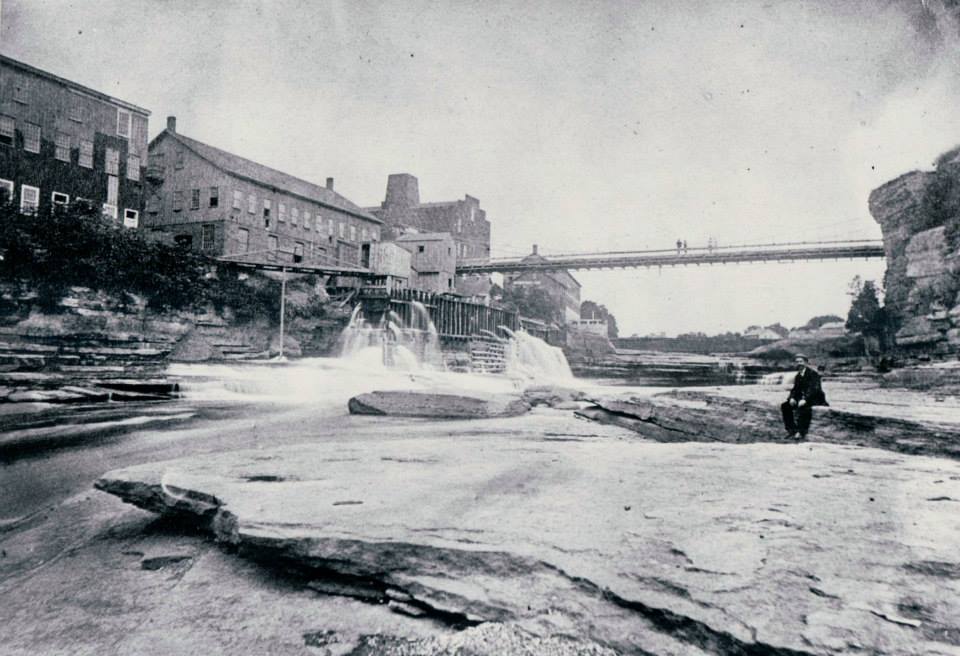
The Mill Street bridge was inspected several times over the following five years and deemed safe by Utica and New York City engineers. Despite this, the question of its safety periodically arose in city council meetings, and some minor work was performed. Nevertheless, by 1928, the city was ready to replace the bridge altogether after considering salvaging some of the prior bridges.
The city of Watertown initially anticipated the replacement with a concrete and steel bridge to cost $75,000. It quickly moved to proceed as the bridge had officially been declared condemned by 1928, though it would remain open for use for emergency vehicles only. The city would ultimately seek funding for $90,000 and postpone work until the following year, after the winter, diverting most traffic to the Court and Pearl Street Bridges.
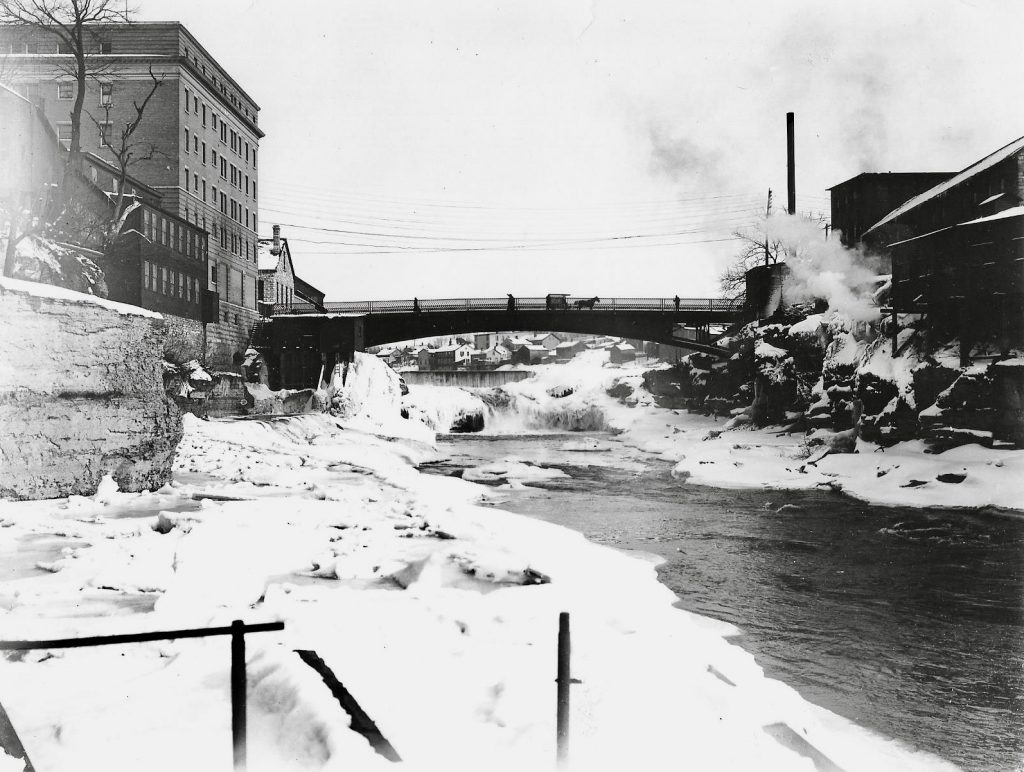
The new Mill Street Bridges from thereon would be wider, whereas the previous bridge suffered from complaints of being too narrow, having been constructed before automobiles. In August of 1929, the new Mill Street Bridge would open to pedestrian traffic, and stores on the North Side of the bridge were eager to attract customers back with advertisements for them to “Come on over!” Understandably, the bridge was closed to foot traffic for five weeks rather than the anticipated two.
The new Mill Street Bridge would finally open to traffic the last week of September, but it wouldn’t take very long for concerns to arise. Just three days later, a movement began from the North Side Improvement League to provide more and better lighting for the new bridge. It would be an issue that eventually found a resolution.

The concrete and steel bridge lasted until 1988, when it was replaced again with a price tag of $2.6 million. If the bridge’s lifespan is on par with others built in the same era, it’s already approached its halfway point.
